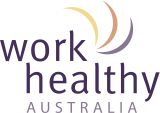
Absenteeism costs the Australian economy up to $44 billion annually. Planned or occasional absenteeism can be managed but if a noticeable pattern is emerging, it is important to determine the root cause of this behaviour.
There are many reasons for absenteeism in the workplace but some of the common causes include;
- Genuine illness
- Employee disengagement
- Personal causes (domestic violence, drug/alcohol problems)
- Bullying and harassment
- Culture of sick leave entitlement
- Work related stress
While some of these issues cannot be completely eliminated by employers, it is important to create a positive workplace culture to reduce those that can. While trying to reduce absenteeism, it is important not to pressure employees to continue to work if it is not in their best interest to do so.
Presenteeism, or working while sick, can also cause productivity loss and cost Australian business organisations up to $35 billion annually. Some of the main reasons for presenteeism include;
- High workload/work related stress
- Minor illnesses
- Self pressure
- Pressure from management and peers
- Lack of support where there is no one to cover while a person is absent
How can your workplace reduce absenteeism / presenteeism?
Open communication
It is important for employees to be able to communicate with supervisors and managers, free of judgement. Employees have the right to feel safe at work and should feel comfortable to report workplace bullying or express concerns about work related stressors. If they are able to express their concerns, then solutions can be explored.
Mental health support
Each year 1 in 5 Australians will experience a mental illness. This may be work related or personal but both may affect workplace attitudes, performance and productivity.
Mental health first aid training can be beneficial for team leaders, supervisors and managers in order to identify and support those who may be experiencing a mental illness.
An Employee Assistance Program (EAP) is another great mental health support in the workplace. An effective program can reduce absenteeism by addressing personal and work related grievances that may be negatively impacting a workplace.
Wellness programs
Workplace wellness programs can be effective in boosting morale and reducing stress related issues in a workplace. Some examples of easy to implement wellness programs include providing healthy food options, providing access to smoking cessation programs or organising a regular onsite exercise program.
Flexible work options
Providing employees with flexible work options may reduce absenteeism by allowing them to balance their commitments outside of work such as caring for children or the elderly, studying, volunteering or extra curricular activities. Flexible working arrangements such as a compressed working week, flexible hours of work, job sharing and working from home have been shown to increase employee engagement, productivity and overall well-being and happiness.
Acknowledge and reward
As important as is it to hold those performing poorly accountable, it is just as important to acknowledge and reward good performances. If positive employee contributions are recognised and rewarded appropriately, it can reduce the risk of ‘burnout’ in the workplace as well as boost employee engagement.
Sign up to our monthly enewsletter
"*" indicates required fields
